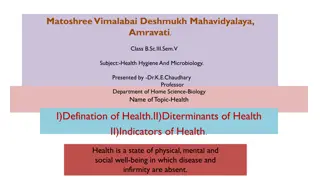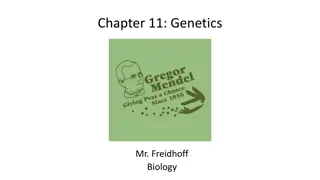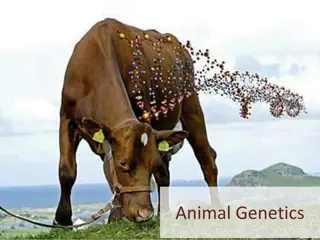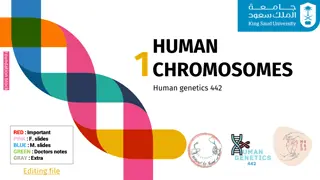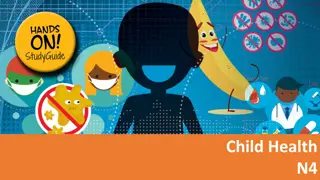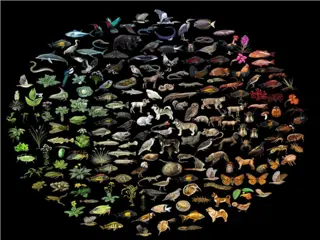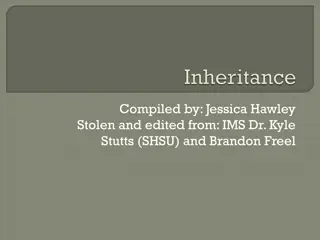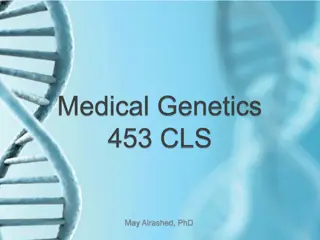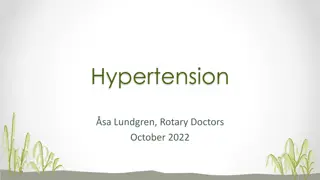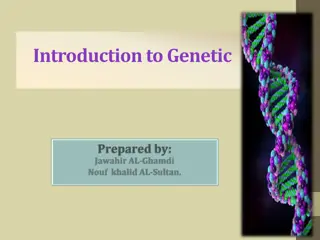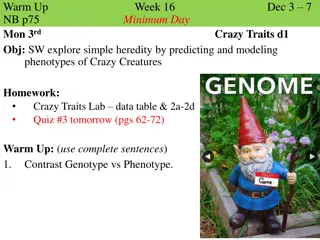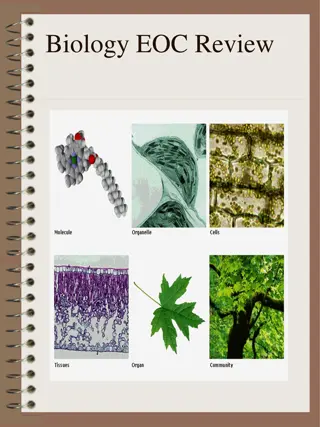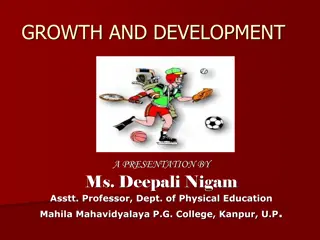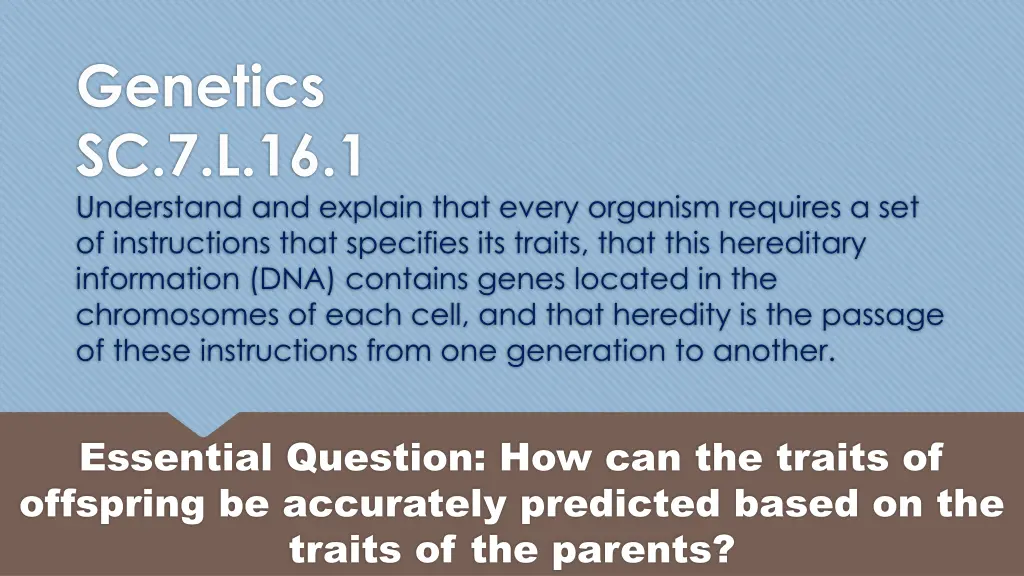
Understanding Heredity and Genetics Basics
Explore the essential concepts of heredity and genetics, including the role of DNA, genes, chromosomes, alleles, and how traits are passed from one generation to another. Discover how Punnett squares and different types of cell division contribute to the understanding of inheritance patterns.
Download Presentation

Please find below an Image/Link to download the presentation.
The content on the website is provided AS IS for your information and personal use only. It may not be sold, licensed, or shared on other websites without obtaining consent from the author. If you encounter any issues during the download, it is possible that the publisher has removed the file from their server.
You are allowed to download the files provided on this website for personal or commercial use, subject to the condition that they are used lawfully. All files are the property of their respective owners.
The content on the website is provided AS IS for your information and personal use only. It may not be sold, licensed, or shared on other websites without obtaining consent from the author.
E N D
Presentation Transcript
Genetics SC.7.L.16.1 Understand and explain that every organism requires a set of instructions that specifies its traits, that this hereditary information (DNA) contains genes located in the chromosomes of each cell, and that heredity is the passage of these instructions from one generation to another. Essential Question: How can the traits of offspring be accurately predicted based on the traits of the parents?
Bell Ringer The gene for curled ears is dominant over the gene for straight ears (e). If you crossed a cat with curled ears (Ee) and a cat with straight ears (ee), what percent of the offspring are expected to have curled ears? A. 100% B. 75% C. 50% D. 25%
Study Jams Heredity http://studyjams.sc holastic.com/studyj ams/jams/science/ human- body/heredity.htm
Heredity Basics Chromosomes: A large collection of DNA wound up like Christmas lights. DNA: A large molecule that carries codes for all your traits. Genes: Instructions for a specific trait (eye color) Alleles: The different forms of genes (brown, blue eyes)
Combinations of Alleles Dominant: The most common allele for a certain trait. When present, it is always seen. Recessive: The least common allele for a certain trait. Can only be seen when both alleles are recessive. Homozygous DOMINANT: a genotype where both traits are dominant. (BB) Homozygous recessive: a genotype where both traits are recessive (bb) Heterozygous: a genotype where a person has both alleles, but only the dominant trait is seen. (Bb)
Think-Pair-Share Is it possible for someone to have blue eyes while their parents both have brown eyes? Explain why or why not.
Punnett Square Vocabulary Genotype: The combination of alleles that an organism carries for a certain trait. (Bb) Phenotype: What trait we can observe in organisms (Brown eyes)
Types of Cell Division Mitosis: A process of cell division where the new cells have a full set of DNA. Used for growth and repair. Meiosis: A process of cell division where the sperm or egg cells have a half set of DNA. Use for reproduction of the whole organism.
Think-Pair-Share Why do organisms have two alleles for every trait?
Punnett Square I Do In rabbits, the allele for black coat color (B) is dominant over the allele for brown coat color (b). Show a Punnett square and list the genotypes and phenotypes for a cross between an animal homozygous for black coat color and one homozygous for brown coat color? Mom Black-furred offspring _______% Brown-furred offspring _______% Dad
Punnett Square We Do Clasp your hands together. QUICKLY! Your left thumb on top is dominant. Your right thumb on top is recessive. Mom= heterozygous Dad=homozygous recessive Left thumb offspring _______% Right thumb offspring _______% Mom Dad
Revisiting the Bell Ringer The gene for curled ears is dominant over the gene for straight ears (e). If you crossed a cat with curled ears (Ee) and a cat with straight ears (ee), what percent of the offspring are expected to have curled ears? A. 100% B. 75% C. 50%* D. 25%
You Do Question #1 In pea plants, the trait for round seeds (R) is dominant and the trait for wrinkled seeds (r) is recessive. Create a cross between two heterozygous parents. What percentage of pea plants will have the phenotype for round seeds? a) 100% b) 75% c) 50% d) 25%
You Do Question #2 Which of the following statements explains the relationship that is most similar to the relationship between genes and chromosomes? a)Directions for building a structure b)Stairs going to the second floor c)Sails that powers the boat d)Fur covering a polar bear
You Do Question #3 Laura crosses a heterozygous seed (Dd) with a homozygous recessive (dd) plant. Round seeds are dominant over wrinkled seeds. What is the genotype and phenotype for the missing offspring in this Punnett Square? a) Heterozygous with round seeds. b) Heterozygous with wrinkled seeds. c) Homozygous dominant with round seeds. d) Homozygous recessive with wrinkled seeds.
Exit Ticket How can the traits of offspring be accurately predicted based on the traits of the parents?

